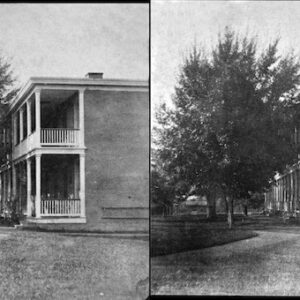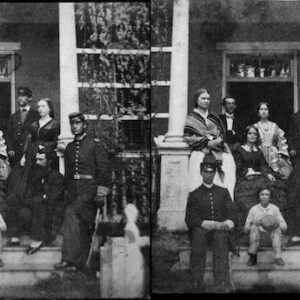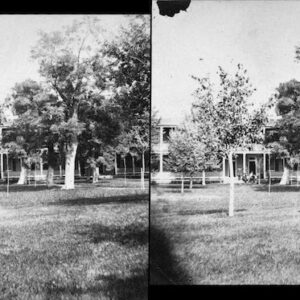Tag: Carlisle PA
Wikipedia says: Carlisle is a borough in and the county seat of Cumberland County, Pennsylvania, United States. Carlisle is located within the Cumberland Valley, a highly productive agricultural region.
The U.S. Army War College, located at the Carlisle Barracks, prepares high-level military personnel and civilians for strategic leadership responsibilities. Carlisle Barracks ranks among the oldest U.S. Army installations and the most senior military educational institution in the United States Army.
The French-born fur trader James Le Tort may have built a cabin in the area as early as 1720. During the colonial era, Scots-Irish settlers began to settle in the Cumberland Valley beginning in the early 1730s. The settlement of Carlisle, at the intersection of several Indigenous trails, was designated by the Pennsylvania assembly and the Penn family in 1751 as the seat of Cumberland County (named for the county of the same name in England). American engineer John Armstrong Sr., a surveyor for the Penn family, laid the plan for the settlement of Carlisle in 1751. Armstrong Sr. settled there and fathered John Armstrong Jr. in 1758. They named the settlement after its sister town of the same name in Cumberland, England, and even designed its former jailhouse (which now serve as general government offices in the county) to resemble the Carlisle Citadel.
As a result of conflicts on the frontier with Native American tribes, a stockade was constructed in the settlement to protect against potential attacks in 1753. In 1755, the stockade was transformed into a fort, known as Fort Carlisle or Fort Lowther. In 1757, colonel-commandant John Stanwix—for whom Fort Stanwix in upstate New York was named—–established his headquarters in Carlisle, and was promoted to brigadier general on December 27. During the French and Indian War (the North American theater of the Seven Years’ War), the largely successful Forbes Expedition was organized in Carlisle in 1758; Henry Bouquet also organized a military expedition from the settlement in 1763 during Pontiac’s War.
The Pennsylvania guide, compiled by the Writers’ Program of the WPA in 1940, described the early history of Carlisle’s public square and the physical changes that had occurred by the first half of the 20th century, noting that the square, located at the
intersection of Hanover and High Sts., is now hardly recognizable as such, for the market house, courthouse, and church have encroached on it. But in the early days its limits were clearly defined. The square was the camping ground of Indian delegations in the tense days when the French were invading the Ohio Valley, the gathering place of Revolutionary mass meetings, and the nucleus of a compact little settlement. Here occurred the touching reunion of the Indian captive, Regina, and her mother, after Colonel Bouquet had forced the conquered tribes to surrender their prisoners in 1764. Regina, a German girl whose family name is given variously as Hartman and Leininger, had been taken captive when small, and had forgotten her mother. With tears coursing down her cheeks the mother then sang a song she once had used as a lullaby:
Allein, und doch nicht ganz allein, Bin ich in meiner Einsamkeit.
[Alone, yet not alone am I, in this
my solitude]
and the long lost daughter rushed into her mother’s arms.
— Federal Writers’Project, “Part II: Cities and Towns”, Pennsylvania: A Guide to the Keystone State (1940)
The settlement of Carlisle was largely supportive of the Patriot cause during the American Revolution, and numerous individuals from the settlement served in the Revolutionary War. Carlisle contains the home of lawyer James Wilson, who served as a representative to the Continental Congress; Wilson was a signer of the Declaration of Independence in addition to being one of the framers of the U.S. Constitution. The First Presbyterian Church, begun in 1757 and completed in 1770, is the oldest building in Carlisle, and was where the Rev. John Steel (known as “The Fighting Parson”) gave sermons in support of the Patriot cause during the American Revolution. The church was also where Pennsylvania settlers met on July 12, 1774, to sign a document protesting the Boston Port Act. A year later Carlisle supplied a contingent for a line infantry regiment of the Continental Army. Steel was named commander of the leading company of this group when they marched from Carlisle. No longer standing but marked by a historical marker is the home of Ephraim Blaine, Commissary General of Revolutionary Army. Also, no longer standing but commemorated, is the home of Gen. John Armstrong Sr., “Hero of Kittanning,” Revolutionary officer, and member of the Continental Congress. Still standing is the gun shop of Thomas Butler Sr., an Irish immigrant, who manufactured long rifles during the French and Indian War. He later became Chief Armorer for The First Continental Congress. He and his five sons served in the Revolutionary War and were known as “The Fighting Butlers. His eldest son was Richard Butler (general).
Carlisle also served as a munitions depot during the American Revolutionary War. The depot was later developed into the United States Army War College at Carlisle Barracks. Revolutionary War legend Molly Pitcher died in the borough in 1832, and her body lies buried in the Old Public Graveyard. A hotel was built in her honor, called the Molly Pitcher Hotel; it has since been renovated to house apartments for senior citizens.
Carlisle was incorporated as a borough a few years after the war on April 13, 1782. Carlisle continued to play a part in the early development in the United States through the end of the century: In response to a planned march in favor of the United States Constitution in 1787, Anti-Federalists instigated a riot in Carlisle. A decade later, during the Whiskey Rebellion in 1794, the troops of Pennsylvania and New Jersey assembled in Carlisle under the leadership of President George Washington. While in Carlisle, the president worshiped in the First Presbyterian Church at the corner of Hanover Street and High Street.
Benjamin Rush, a signer of the Declaration of Independence, developed Carlisle Grammar School in 1773 and chartered it as Dickinson College—the first new college founded in the newly recognized United States. One of the college’s more famous alumni, the 15th U.S. president, James Buchanan, graduated in 1809. The Dickinson School of Law, founded in 1834 and affiliated then with Dickinson College, ranks as the fifth-oldest law school in the United States and the oldest law school in Pennsylvania.
On June 2, 1847, Carlisle was the site of the McClintock Slave Riot, which that broke out after a fugitive slave hearing at the courthouse; several of the fugitive slaves were able to escape during the fray with the help of Carlisle’s black residents, while one of the slave catchers later died of his wounds. A Dickinson College professor, John McClintock, was tried and acquitted for his role in the riot.
A general borough law of 1851 (amended in 1852) authorized a burgess and a borough council to administer the government of the borough of Carlisle.
Leading up to the American Civil War, Carlisle served as a stop on the Underground Railroad. During the war, an army of the Confederate States of America, under General Fitzhugh Lee, attacked and shelled the borough during the Battle of Carlisle on July 1, 1863, as part of the Gettysburg Campaign. A cannonball dent can still be seen on one of the columns of the historic county courthouse.
Showing all 3 resultsSorted by latest


